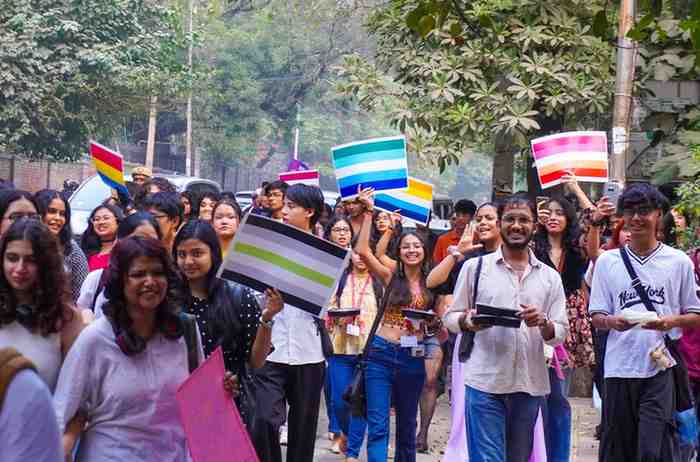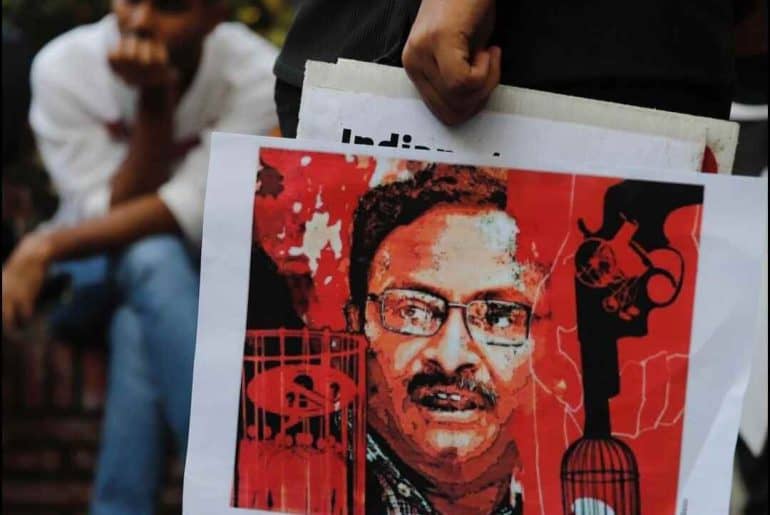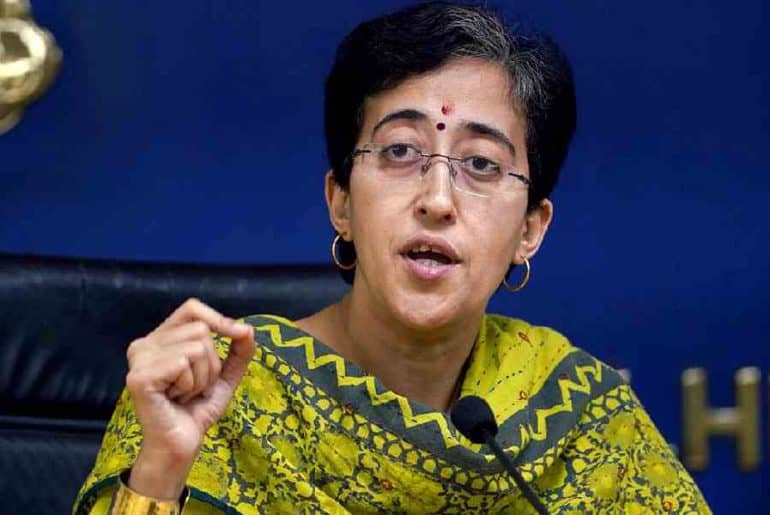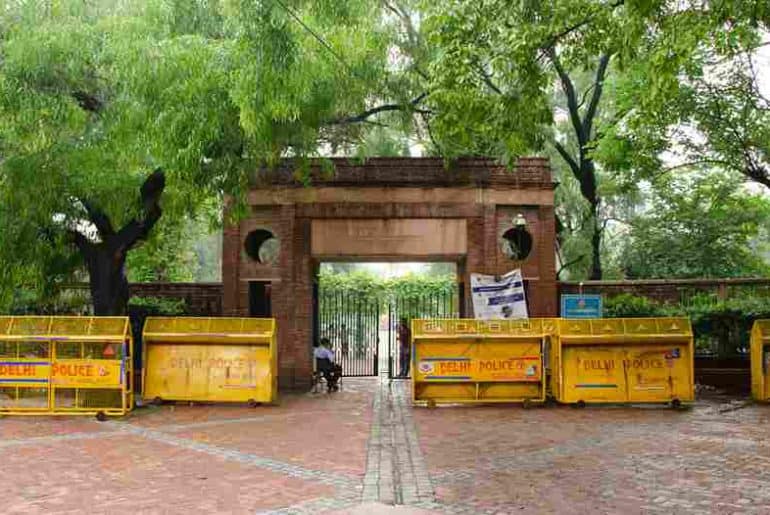On the 9th of November, 2024, a North Campus-wide Pride Parade was organized by the Hindu College Queer Collective. The parade was joined by students and activists of various universities, queer collectives, gender cells, and other organizations. It also included several poetic, dance, theatrical, and music performances as a part of the event.
The Pride Parade of the Hindu College Queer Collective (HCQC) was, unlike several sponsored events organized in DU, a completely crowdfunded event that sought to keep the parade “community-funded” and to avoid rainbow capitalism. The event kicked off with several cultural performances in the Sanganeria Auditorium of the college by guest student performers as well as performances by societies and cells of Hindu College that included poems by students on the queer love, music performances by students of Alankaar: The Classical Music Society and Aria: The Western Music Society, dance performances by the members of the North East Cell, Adhrita: The Indian Dance Society, and a play titled “Dear Closet” by Masque: The English Theatre Society of Hindu College revolving around transphobia. The cultural programme also sought to reach out to queer students and allies beyond Hindu College and hence the HCQC pride parade, for the first time, also featured more than 15 guest performers.
The final ‘surprise performance’ was not revealed to the audience via the official schedule and was only revealed at the moment of the performance to be a dance by the members of HCQC. The energetic productions throughout the day reflected upon the audience, who also twirled to the beats from their respective seats
The Pride Parade event also featured several stalls set up outside the auditorium. These stalls ranged from Camera Commune, a film club’s stall on prints, books, and keffiyeh on queer movements and Palestinian struggle to raise funds for Trans Community Kitchen, to Bhagat Singh Study Circle’s stall of multilingual progressive books, The Azadi Project’s stall of crocheted and handmade items made by displaced women, a stall of jewelry, mehendi painting, candles by queer folk, and a stall of prints, live sketching, and face painting by college students. The stalls were allotted either to queer or queer-led organizations or to individuals and/or organizations that worked for marginalised communities.
The Pride Parade formally began at 4:30 pm after all the cultural performances, and it started from Gate 4 of Hindu College. The parade covered almost the entire North Campus as it went from Hindu College, following the route through the Delhi School of Economics, Kirori Mal College, Chhatra Marg, Ramjas College, Daulat Ram College, and Shri Ram College of Commerce, and finally culminated at the Gate 4 of Arts Faculty, North Campus.
As the parade turned to Ramjas College and a huge crowd of students from the college stared at the crowd, a student from the parade stated:
“Sab hume aise dekh rahe hai par accha lag raha hai. Hum lad rahe hai apne liye. It feels good that everyone is looking at us. We are only fighting for ourselves.)”
Powerful slogans of resilience and support echoed through the course of the parade.
“Homophobia Down Down!
Transphobia Down Down!
Teri Mukti, Meri Mukti, Queer Mukti Zindabad (Your Freedom, My Freedom, Queer Freedom Long Live!)
Jai Bhim-Lal Salaam
Rape Culture Ka ek Jawab-Inquilab Zindabad
Hum Nafrat Hatane Nikle Hai, Aao Humare Saath Chalo (We have come out to remove hatred; come join us!)
Student Unity Long Live”
As the parade was being closely monitored by the Delhi Police, whose permission was sought and granted for the same, several slogans and chants raised during the parade were censored. The azadi chant, for instance, was censored by the police authorities, and they requested the organizers not to raise such chants.
Aishwarya, the president of the HCQC concluded the parade with a small address to the crowd and remarked:
We give a lot of importance to ensure that the pride parade is 100% crowdfunded and that it is preceded by a cultural event everytime because that’s our effort to tap into multiple forms of expression and portray how queer is in everything and everything can be queered. There is no specific space where queers can express queerness, such as, the pride parade. Queerness can be present in every form and expression, and is a way of life. The way academia operates in the current status quo and how it can be inaccessible for so many people is the reason why we preceded the pride parade with the cultural program.”
Aishwarya further added:
“We also believe in a politics of collaboration and tried to collaborate with different societies and cells that might not engage with issues or queerness otherwise. In several colleges, performance societies are given more importance than queer and gender based collectives so our idea of doing a pride parade in collaboration with these societies helps us reverse and restructure the hierarchy structure within the college space and reach out to larger audiences, including the ECA societies, that engage with and learn about queerness in the process. We feel that we have succeeded in creating a non-judgemental space with our pride parade event.”
Some students did mention that while organising the Pride Parade at a formal level by one of the very few formally recognised Queer Collectives in DU is in itself a huge achievement by the HCQC, they felt that several issues such as transphobia, gender dysphoria, and institutional deaths of queer students in our own campuses, did not get enough platform as much as they should have.
Read Also: SFI Delhi organized the annual Pride Parade; chants of Azadi echoed throughout.
Featured Image Credits: Sharanya Dayal for DU Beat
Vedant Nagrani











